Sunday Apr 20, 2025
Sunday Apr 20, 2025
Friday, 24 November 2023 00:00 - - {{hitsCtrl.values.hits}}
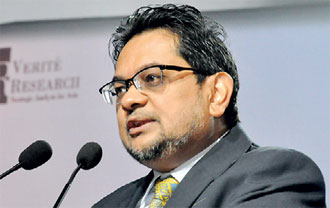
Verite Research Executive Director Dr. Nishan De Mel
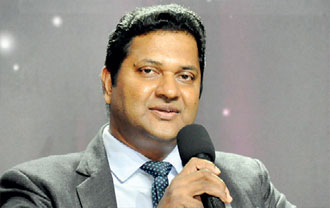
Department of Fiscal Policy Director General Dr. Kapila Senanayake
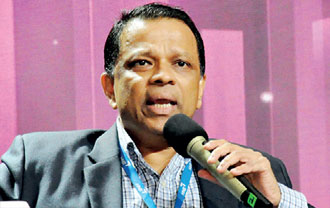
HNB MD Jonathan Alles
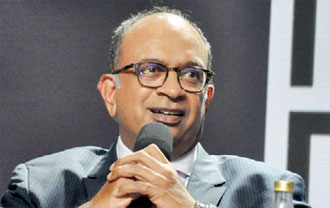
Sunshine Holdings Group Managing Director Vish Govindasamy
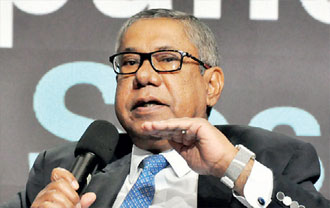
Colombo Port City Economic Commission Commissioner Reyaz Mihular
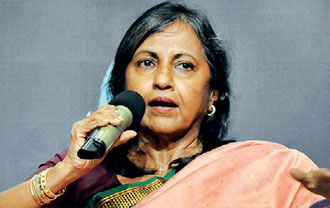
Jetwing Travels Chairman Shiromal Cooray
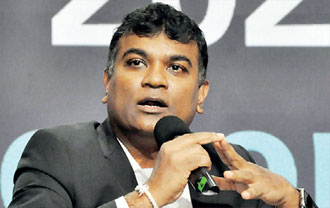
Brandix Group MD Hasitha Premaratne
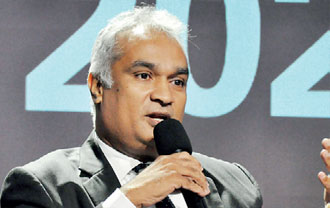
Federation of Information Technology Industry Chairman Indika De Zoysa
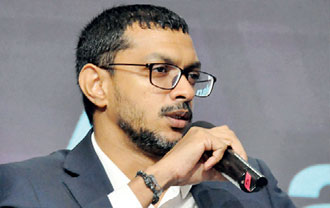
Board of Investment Executive Director for Investment Promotion Prasanjith Wijayatilake
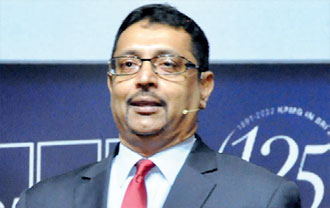
KPMG Principal and Head of Tax Suresh Perera
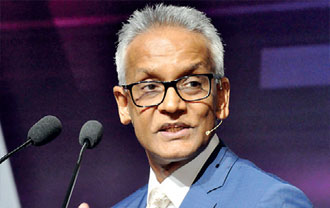
Moderator Suren Rajakarier
 KPMG Sri Lanka’s 2024 Budget Forum titled ‘Road to Recovery’ yesterday welcomed the lack of no new taxes, but noted there is no guarantee there will not be any after the Budget.
KPMG Sri Lanka’s 2024 Budget Forum titled ‘Road to Recovery’ yesterday welcomed the lack of no new taxes, but noted there is no guarantee there will not be any after the Budget.
Detailing proposals in the Budget, KPMG Principal and Head of Tax Suresh Perera welcomed measures to reduce the number of items exempt from Value Added Tax, noting that too many exemptions tend to distort the system. Over 300 items are exempt from VAT in Sri Lanka, and over 250 are likely to come off that list with exemptions to medical and educational items. He pointed to Singapore where only five items are exempt from VAT, adding that frequent rate changes also bring about additional problems including inflation, as retailers do not amend prices corresponding to rates.
Delivering the keynote speech at the forum, Verite Research Executive Director Dr. Nishan De Mel stressed on expanding revenue to fund burgeoning interest costs, and noted it is unlikely the Government could at any point reverse its decision to increase allowances of Government servants and pensioners. De Mel noted that Sri Lanka is not yet fully on the road to recovery and pointed to three major risks before the country.
Three aspects of risk
At first was the question of revenue, with a need to raise revenue to at least 15% of GDP, but he lamented Sri Lankan Budgets are seldom analytically laid out versus revenue expectations.
“This is a pattern historically in Sri Lanka. We are addicted to missing revenue targets. If we are intelligent as leaders, we should make that correction and be realistic. We must not promise handouts when our revenue is not right. We miss our target by 10-12% on average and for 2023 it will be around 15%,” De Mel stated.
He added if Sri Lanka aims to curtail the primary surplus at 0.8% next year, given its high expenditure the country needs to raise revenue by 61%. “But the Budget doesn’t even attempt to reach that target.” If the Government were to try to reach that target with bank capitalisation and negate that cost through selling equity, that would still require a revenue increase of 45%, which is still very large for the country to stay within the guardrails of the IMF program.
The second risk De Mel highlighted is high interest cost, which is already Rs. 251 billion higher this year than what was expected when the recovery plan was formulated. Whilst this comes off capital expenditure, he noted the way the country plans its interest pathway is not sound as there has been a significant deviation. Sri Lanka is the country with the largest interest cost to the Government in the world, he pointed out, which was 72% of revenue in 2021. When interest costs were still lower from 2015 to 2019, 89.8% of debt increase had been to service interest costs, which is alarming.
The third risk highlighted by De Mel was around debt sustainability, as the numbers don’t add up. He noted GDP growth is expected to be 1.8% next year, but Nominal GDP at 11.5% and inflation at 5% are not aligned. Revenue is likely to deviate by Rs. 429 billion, with cuts to capital expenditure to try match it.
 The silver bullet?
The silver bullet?
“We have one shot as a solution. 59% of countries restructure their debt more than once. They get out of one hole to fall into another. Sri Lanka must try to avoid falling again. We have a plan on Debt Sustainability program that Treasury bills will settle at 7.5% and Treasury bond rates at 10% closer to the yield curve of 2015. The haircut on International Sovereign Bonds is at 30% – that was the published expectation. But Sri Lanka still looks riskier for buyers due to global conditions which are more adverse. There is a Liquidity squeeze in terms of access to markets, so we may have to plan for higher interest rates in the medium term.”
“If we do that, we need to have a much larger haircut on external debt, maybe 50%. We need more data from the Government to come to a final number, and that is the only major corrective instrument we have. Doing that can help Sri Lanka get back on the road to recovery. We are probably not on the path to recovery yet. We do not have too many switches left, and this is one switch we have left. Coincidentally that fits with global figures as well. Countries that have done restructuring once have an average of 63%. Getting to that figure of 50% gets us in the zone, and into the window of a single restructure. When you do a deep restructure that brings a lot of confidence, whereas too little is a vicious cycle,” De Mel stated.
Revenue and tax procedure
The keynote was followed by a panel discussion hosted by Suren Rajakarier, who asked the eminent panellists who the proposals would affect and assist industry. Lending views from the perspective of policymakers, Dr. Kapila Senanayake, Director General of the Department of Fiscal Policy at the Treasury stated fiscal discipline is a must for business to run smoothly, and the Government was making every effort to ensure this and boost revenues to achieve a primary balance. Conceding the Government has missed its targets up to now, he expressed hope the draft fiscal management bill that would come before Parliament in March next year will provide further impetus to curtail unwanted expenditure. Sunshine Holdings Group Managing Director Vish Govindasamy noted that despite a lot of focus in the Budget on agriculture, dairy and paddy sectors, the new VAT regime will increase costs to these sectors. Govindasamy said he looks forward to more strategies to manage post-harvest, with more technology infusion to reduce waste as this would contribute greatly towards food security. He called for an overhaul of archaic agricultural and quarantine systems to enable the introduction of new seed varieties, which would be easier than releasing new lands into the system. Govindasamy noted that despite the president calling for unused state lands to be released for agriculture, squatters and bureaucratic bungling dampens this process.
Better access a must for exports
From the perspective of exporters, Brandix Group Managing Director Hasitha Premaratne stressed market access is very important for Sri Lanka, and to focus on the specific strengths of the country. He noted there are no major proposals on the tax side that impacts exports, which is welcome consistency. However, Premaratne noted there is a need to convert some of the listed proposals into action. He listed market access as a key requirement for the export sector, and access to the right destinations.
“As a country when we look at competing globally, it is vital we have equal access to reach different markets. Free Trade Agreements matter a lot. There is emphasis there and talks with multiple countries. Bangladesh, Thailand and Indonesia have been mentioned, but those are manufacturing destinations where we might struggle to compete. But India is a very important market. The Indian FTA is in negotiation, and from an apparel perspective we have a limitation in the existing agreement as we can only send eight million pieces on duty-free basis. So, we need to either remove the cap or increase the cap, as there is a massive growth in the Indian middle class.” Secondly, Premaratne touched on the need to build capacity for manufacturing, as the current Board of Investment export processing zones are at capacity, and there have been proposals to introduce three to four more. “But these things take time, and we need to see action on implementation and ensure this will happen fast enough. There must be focus especially on the right locations for capacity building,” he stated.
He also welcomed the initiative to boost funding for Small and Medium Enterprises which can be allocated for research and development to enhance their product capability. He said a programme structured through banks or the Joint Apparel Associations Forum – in the case of apparel – would help small and medium enterprises to explore new avenues and innovation to diversify products and markets.
“R&D and innovation is crucial to uplift the standard of products we export so we can create better value. We must not only diversify exports to new segments, but also within existing segments like apparel itself. We are doing a lot of work in terms of investing back and innovating to bring newness to the product. Some allocations have been done to SMEs and that is very important because they struggle to invest on their own into these areas,” he enthused. Premaratne also touched on expanding logistics, as speed to market is critical for all export industries, but noted there are no major proposals in that regard.
 Port City a dark horse
Port City a dark horse
Colombo Port City Economic Commission Commissioner Reyaz Mihular described the Port City as a ‘dark horse’ that has the potential to make Sri Lanka’s economic problems go away. He noted the project has stopped and started numerous times, but with necessary frameworks coming into place the project is receiving renewed interest from investors.
“I hope there will be consistency in the policy there, and there will not be any changes to the program. There is a lot of interest coming in, and if we get Port City right, our debt sustainability problems will be all sorted.”
Mihular, who is also Chairman of Sri Lanka Telecom, said the Government hopes to complete the divestiture of the state telecom giant by the second quarter of next year, and the regulators are keen to get the framework right to create a conducive playing field for all operators. A conducive framework will fuel the growth of the digital economy he said, and enthused at the level of interest the company has received “We are looking at the right buyer, with credibility and deep pockets to ensure the continued growth of the segment,” he averred. Mihular added reforms are critical to boost productivity and governance, and stated SLT will end the year positive with the right governance principles.
Stability brings banks to the fore
Hatton National Bank Managing Director Jonathan Alles said the banking sector wants to support the resurgence of the economy, but noted banks must remain stable and adequately capitalised to play the catalytic role that is expected of them. He noted it has been a long stressful period, but some sectors have performed well despite the challenges, and that banks are ready to support them further. But stability must be ensured.
“Will the Government play its role? Notwithstanding the IMF, on our own account we must do what is right and it is important the necessary rules and regulations are enacted fast, and there is no room for leakages. We need a smaller government that doesn’t spread its tentacles far and wide, but really being nowhere. Broadening the tax bracket also means letting go of some State institutions so they can transform into organisations that can drive productivity and pay tax,” Alles stated.
He remarked that Sri Lanka is not out of trouble yet just because the country received one IMF tranche. Sri Lanka has a long journey ahead for another five years, he said. The country must privatise and stop procrastination and ensure action. Revenue must support the expenditure and make Sri Lanka attractive as a nation for foreign investment, he said. “We are still talking of attracting one or two billion dollars in investment a year, when others in the region are doing ten times that,” he added.
 Thinking big and looking ahead
Thinking big and looking ahead
Representing the tourism trade, Jetwing Travels Chairman Shiromal Cooray said stability is essential to grow tourism, and welcomed the current milieu of stability. She pointed to the lack of a cohesive marketing and brand strategy for Sri Lanka for over a decade, and remarked an effective strategy could see Sri Lanka reach its target of five million tourists a year. “I would look at value rather than the arrival numbers. Tourism could become 5 to 10% of GDP, and for that we must look at increasing tourist spend and develop the right options in terms of infrastructure and facilities to get them to spend,” she said. Cooray also enthused at the possibility of work recommencing soon on the central expressway, and expressed hope for the future of the sector.
Board of Investment Executive Director for Investment Promotion Prasanjith Wijayatilake stated the proposal to amalgamate the BOI and the EDB will add greater efficiencies to an entrepreneurs lifecycle, and create effective synergies for a single window to drive investment and trade. Touching on the need to expand export processing zones, as alluded to by Premaratne, Wijayatilake noted identifying the right areas to establish zones and putting in the necessary infrastructure would pose some challenges.
Federation of Information Technology Industry Chairman Indika De Zoysa touched on the need to drive automation and digitisation to unveil the next wave of growth for Sri Lanka.
“Technology can help transform people’s lives and how we work. The QR code that was employed during the fuel crisis presents a good example. It was done quickly, and within a short span we were able to streamline the process through data and develop supply plans and reduce wastage. We have been talking about a digital identity card like in India for 20 years, but we haven’t done it. We have failed for many reasons, and even when you consider some of the proposals in the Budget, I worry that they will work in silos rather than have the connectivity they should. They won’t talk to each other. India has done it for a billion people. Are we lacking the technology and capacity, no! On the last attempt it was a battle between government agencies on who should own it,” De Zoysa lamented.
He remarked the global average for contribution to GDP by the digital economy is now at around 20%, whilst Sri Lanka is at less than 5%. He noted the industry has drawn up a plan up to 2030 and will take a leadership role to drive implementation with a clear path.